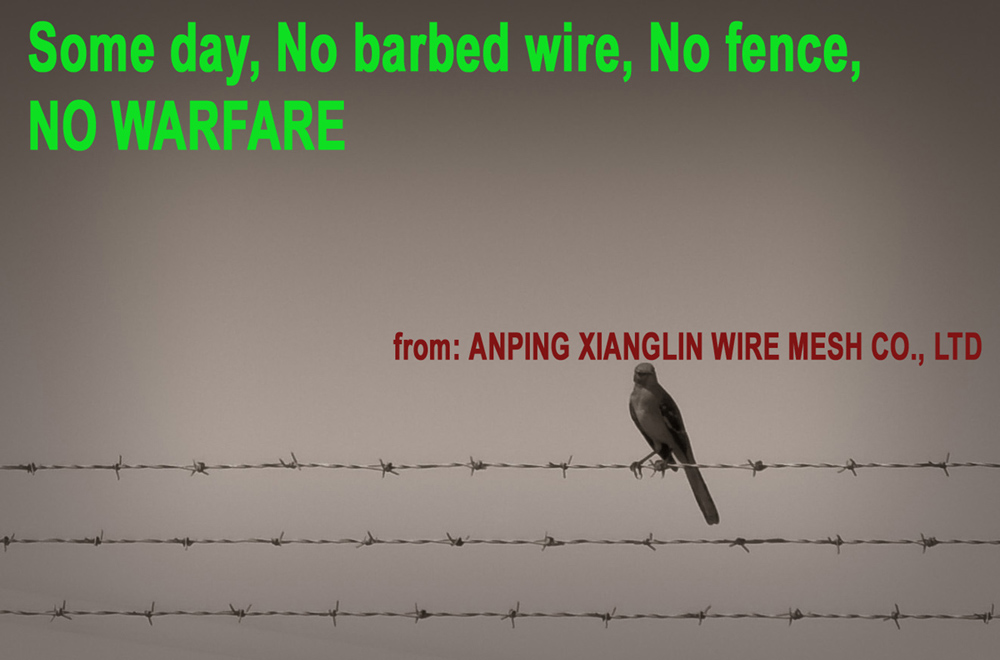| |
|
barb wire informations |
| barb
wire, also known as barb wire (and sometimes bob- wire or bobbed wire)
.it is a type of fence made up of strings of wire with sharp barbs made
of wire spaced evenly along its length.barb wire was developed in the
mid-1800s. It is especially effective for cattle. It’s inexpensive,
but it’s hard to work with because it rips up clothing, gloves and
skin. It can be dangerous if animals get caught in it and can cause damage
severe enough to require euthanasia. barb wire is illegal in some towns
and subdivisions Maintenance is significant and includes adjusting tension,
mending breaks, and tightening corners. barb wire has a lifespan of
approximately 30 years. |
| |
| Life in the American West was reshaped
by a series of patents for a simple tool - barb wire - that helped ranchers
tame the land. Patents for improvements to wire fencing were granted by
the U.S. Patent Office, beginning with Michael Kelly in November 1868
and ending with Joseph Glidden in November 1874, that shape the history
of this tool.Before barb wire, the lack of effective fencing limited
farming and ranching practices, and the number of people who could settle
in an area. The new fencing changed the West from vast and undefined prairies/plains
to a land of farming, and widespread settlement.Wooden fences were costly
and difficult to acquire on the prairie and plains, where few trees grew.
Lumber was in such short supply in the region that farmers were forced
to build houses of sod.Likewise, rocks for stone walls were scarce on
the plains. barb wire proved to be cheaper, easier, and quicker to use
than any of these other alternatives.The first wire fences (before the
invention of the barb) consisted of only one strand of wire, which was
constantly broken by the weight of cattle pressing against it.Michael
Kelly made a significant improvement to wire fencing, he twisted two wires
together to form a cable for barbs - the first of its kind. Known as the
"thorny fence," Michael Kelly's double-strand design made fences
stronger, and the painful barbs made cattle keep their distance. |
| |
|
| |
In 1873 and 1874, patents were
issued for various designs to compete against Micheal Kelly's invention.
But the recognized winner was Joseph Glidden's design for a simple wire
barb locked onto a double-strand wire.Joseph Glidden's design made barb
wire more effective, he invented a method for locking the barbs in place,
and invented the machinery to mass-produce the wire.Joseph Glidden's
U.S. patent was issued November 24, 1874. His patent survived court
challenges from other inventors. Joseph Glidden prevailed in litigation
and in sales. Today, it remains the most familiar style of barb wire.
Living patterns of the nomadic Native Americans were radically altered.
Further squeezed from lands they had always used, they began calling
barb wire "the Devil's rope."More fenced-off land meant
that cattle herders were dependent on the dwindling public lands, which
rapidly became overgrazed. Cattle herding was destined to become extinct. |
| |
| After its invention, barb wire
was widely used during wars, to protect people and property from unwanted
intrusion. Military usage of barb wire formally dates to 1888, when
British military manuals first encouraged its use.During the Spanish American
War, Teddy Roosevelt's Rough Riders chose to defend their camps with the
help of barb fencing. In turn-of-the-century South Africa, five-strand
fences were linked to blockhouses sheltering British troops from the encroachment
of Boer commandos. During World War I, barb wire was used as a military
weapon.Even now, barb wire is widely used to protect and safeguard military
installation, to establish territorial boundaries, and for prisoner confinement.Used
on construction and storage sites and around warehouses, barb wire protects
supplies and persons and keeps out unwanted intruders. |
|
|
| |
